

Can We Design Trust Between Humans and Artificial Intelligence? For many years, interacting with artificial intelligence has been the stuff of science fiction and academic projects, but as smart systems take over more and more responsibilities, replace jobs, and become involved with complex emotionally charged decisions, figuring out how to collaborate with these systems has become a pragmatic problem that needs pragmatic solutions.
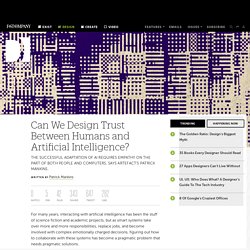
Machine learning and cognitive systems are now a major part many products people interact with every day, but to fully exploit the potential of artificial intelligence, people need much richer ways of communicating with the systems they use. The role of designers is to figure out how to build collaborative relationships between people and machines that help smart systems enhance human creativity and agency rather than simply replacing them. Imagine you are commuting in an autonomous car when it suddenly slams on the brakes, changes course, and heads off in a new direction. Ant colony optimization algorithms. Ant behavior was the inspiration for the metaheuristic optimization technique This algorithm is a member of the ant colony algorithms family, in swarm intelligence methods, and it constitutes some metaheuristic optimizations.
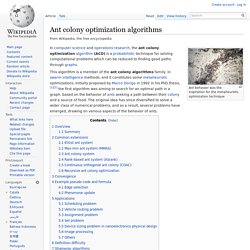
Initially proposed by Marco Dorigo in 1992 in his PhD thesis,[1][2] the first algorithm was aiming to search for an optimal path in a graph, based on the behavior of ants seeking a path between their colony and a source of food. The original idea has since diversified to solve a wider class of numerical problems, and as a result, several problems have emerged, drawing on various aspects of the behavior of ants. Overview[edit] Summary[edit] In the natural world, ants (initially) wander randomly, and upon finding food return to their colony while laying down pheromone trails. Over time, however, the pheromone trail starts to evaporate, thus reducing its attractive strength. Common extensions[edit] Here are some of the most popular variations of ACO algorithms. to state.
UCB-ICSI-Vision-Group/decaf-release. Inceptionism: Going Deeper into Neural Networks. Posted by Alexander Mordvintsev, Software Engineer, Christopher Olah, Software Engineering Intern and Mike Tyka, Software EngineerUpdate - 13/07/2015Images in this blog post are licensed by Google Inc. under a Creative Commons Attribution 4.0 International License.
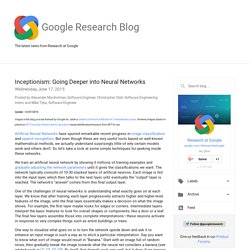
However, images based on places by MIT Computer Science and AI Laboratory require additional permissions from MIT for use.Artificial Neural Networks have spurred remarkable recent progress in image classification and speech recognition. But even though these are very useful tools based on well-known mathematical methods, we actually understand surprisingly little of why certain models work and others don’t. So let’s take a look at some simple techniques for peeking inside these networks. We train an artificial neural network by showing it millions of training examples and gradually adjusting the network parameters until it gives the classifications we want. Why is this important?
What NLP problems has deep learning or neural networks been applied to successfully? Xavier Amatriain Lecture 1+2. MongoDB gets its first native analytics tool. Most companies realize they need to become more data driven in order to make better decisions and identify new opportunities.
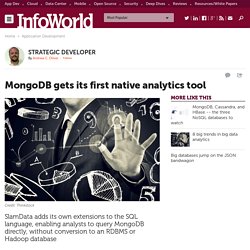
Many also recognize the need for new tools to analyze their data, much of it stored in operational systems. At the same time, for their operational systems, a growing number of companies have adopted NoSQL databases, the most popular of which is the document database MongoDB. Unfortunately, document databases are nobody’s first choice for analytics, so people end up using ETL to move data from MongoDB to an RDBMS or Hadoop for analysis. ETL processing adds latency, however -- perhaps too much latency if you want your business to be "data driven.
" Now a new open source analytics tool, SlamData, has arrived to operate directly on MongoDB data. I asked Carr about his target market. In order to deal with the difference between documents and tables, SlamData extends SQL with an XPath-like notation. There’s overlap between the back end of the project and Apache Drill. Making sense of too much data. Breaking down big data. Big data is, for lack of a better word, big right now.
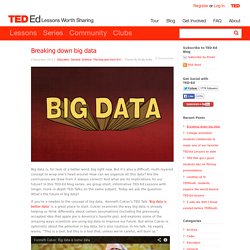
But it’s also a difficult, multi-layered concept to wrap one’s head around: How can we organize all this data? Are the conclusions we draw from it always correct? And what are its implications for our future? In this TED-Ed blog series, we group short, informative TED-Ed Lessons with longer, more in-depth TED Talks on the same subject. Today we ask the question: What’s the future of big data? If you’re a newbie to the concept of big data, Kenneth Cukier’s TED Talk ‘Big data is better data’ is a great place to start. ML:Main - Coursera.